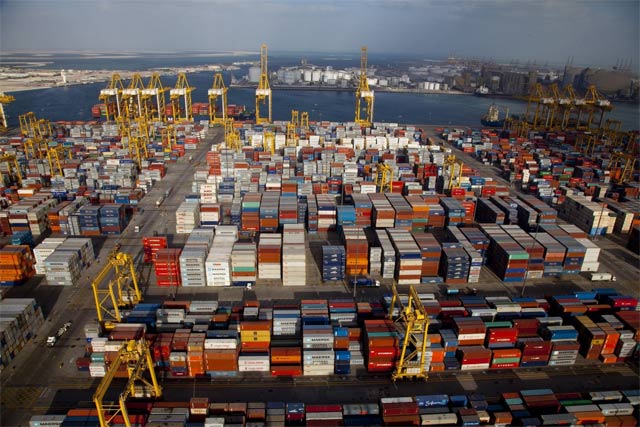
Islamabad made the request during the eighth round of negotiations for the second phase of the Free Trade Agreement (FTA), signed 11 years ago. The eighth round was held in Beijing on September14-15, which concluded with a breakthrough in the negotiations, said Commerce Secretary Younus Dagha.
The meeting was co-chaired by Dagha and China Vice Minister for Commerce Wang Shouwen.
Chinese firms have already invested $30b in CPEC projects
“After two days of intense negotiations, the Chinese side agreed to address the major concerns of Pakistan regarding preference erosion for Pakistani exports and meaningful market access during the second phase,” according to a statement of the commerce ministry issued from Beijing.
Pakistan shared a list of around 70 high priority items of its export interest for immediate market access, which the Chinese side agreed to consider favourably, according to the commerce secretary. Pakistan has requested zero-duty on these items. He said that these tariff lines constitute more than 80% of Pakistan’s current exports to China.
China will respond to Pakistan’s request before the next round, which is expected to take place in December.
Earlier, China was willing to completely waive duties on 70% of tariff lines but it wanted certain benefits in return. It was not immediately clear what Pakistan has agreed to give, if China agrees to immediate give market access to these 70 items.
The meeting ended with a resolve to continue working together to make China-Pakistan FTA a win-win proposition for both countries, said the commerce ministry.
Both sides are negotiating the FTA afresh after Pakistani industries complained about the 2006 agreement that was highly in favour of China. Free trade access available to Pakistan under the FTA could not be sufficiently utilised as Beijing did not reduce duties on products where Pakistani sectors enjoyed a competitive advantage.
Pakistan has also been concerned over not having been able to get meaningful market access during the first phase of the FTA.
The margin of preference over other countries that Pakistan should have enjoyed effectively came to naught after China signed similar free trade accords with other countries, particularly the Association of Southeast Asian Nations (ASEAN).
At present, the balance of trade is in favour of China. Against exports worth $4.5 billion, Pakistan imported $15 billion worth of products from China in the last fiscal year 2016-17.
In the last seven rounds, Pakistan had been pleading the case of restoration of its preference under the FTA which had been eroded due to subsequent FTAs of China, said Dagha. He pointed out that the preference on 79% of Pakistan’s exports to China had been eroded because of Chinese free trade agreements with other nations.
Pakistan had been raising this issue with the Chinese side time and again during the previous rounds without any consensus to address these concerns. It was in this back drop, the Secretary Commerce decided to himself lead the negotiations with the Chinese Vice Minister as his counterpart.
CPEC projects enter second phase
Both countries agreed on four broad principles for implementing the second phase of FTA, which would protect the interest of local industries. One of the main principles is that tariff concessions will not be on a reciprocal basis, but will be in favour of Pakistan. The tariff reduction modalities of the second phase will be independent of the first phase, meaning there will be fresh negotiations on all aspects of the agreement.
At present, Chinese exporters were enjoying zero duties on 35% of total product lines.
Published in The Express Tribune, September 16th, 2017.
Like Business on Facebook, follow @TribuneBiz on Twitter to stay informed and join in the conversation.































1714024018-0/ModiLara-(1)1714024018-0-270x192.webp)









COMMENTS (1)
Comments are moderated and generally will be posted if they are on-topic and not abusive.
For more information, please see our Comments FAQ